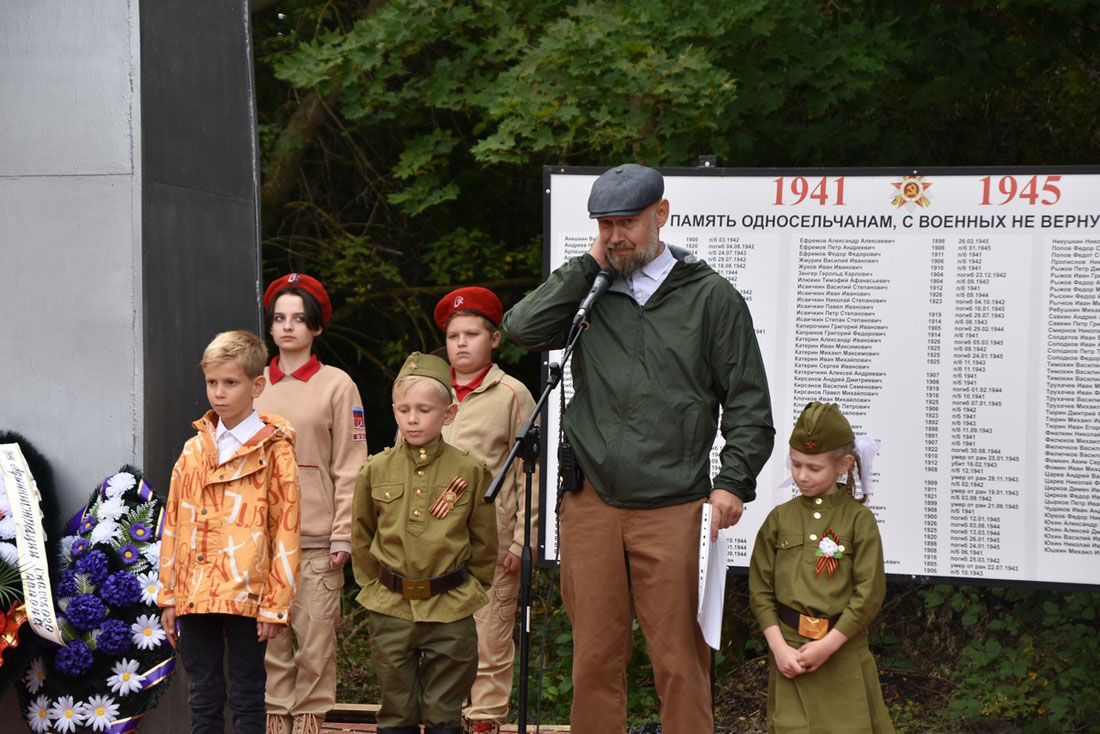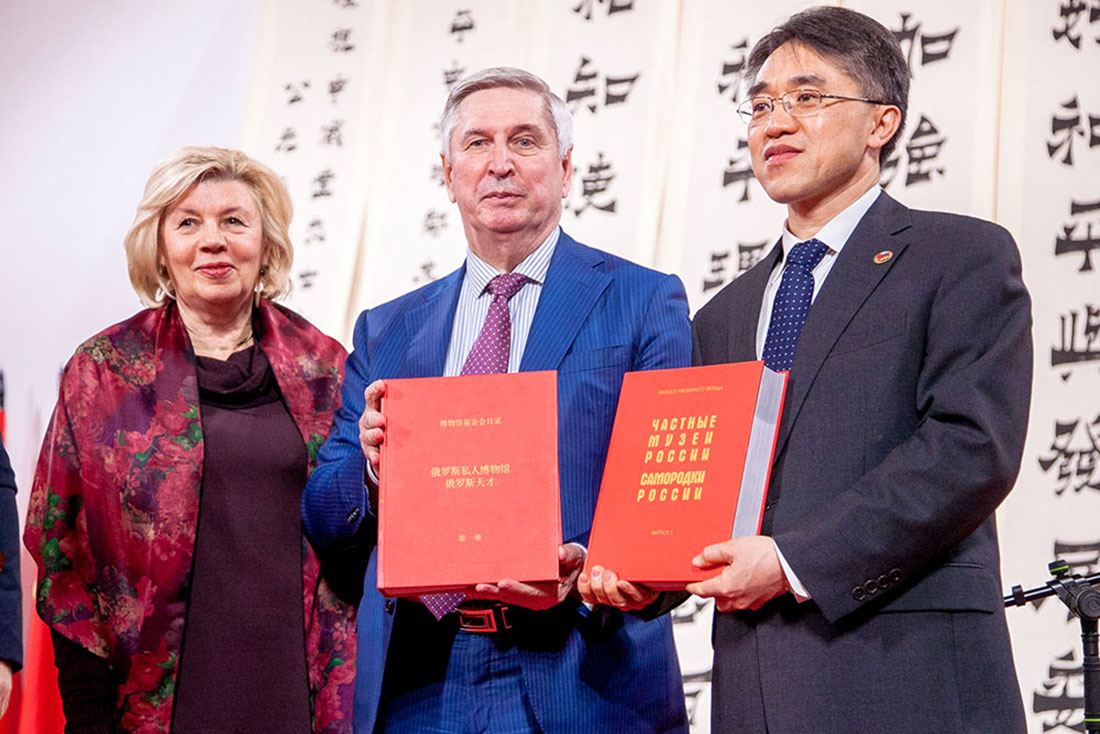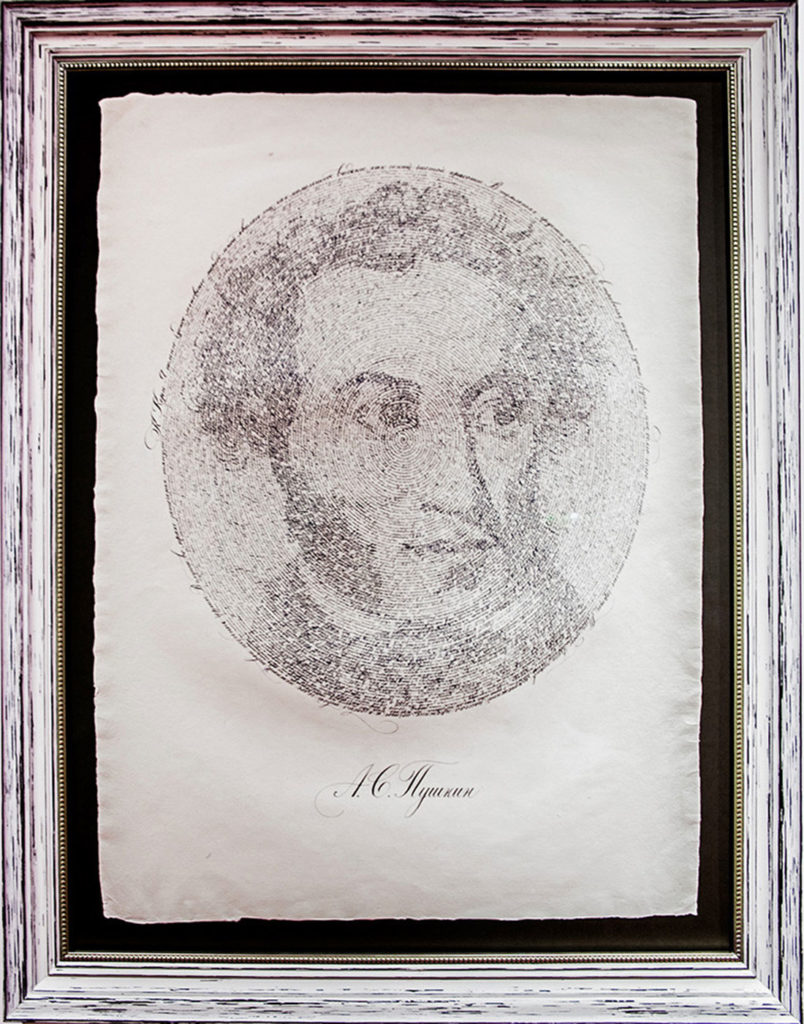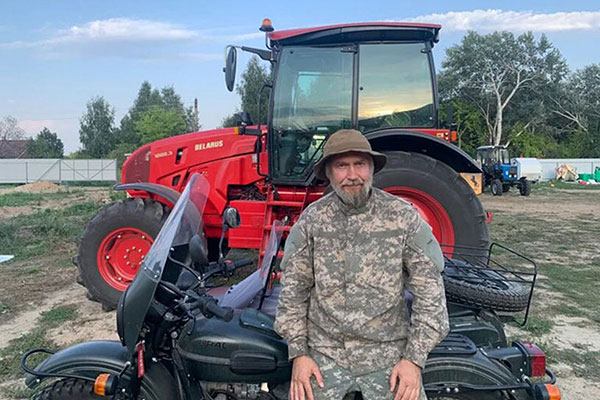
Interview with Alexey Shaburov, CEO, Chairman of the Board and co-owner of the Sokolniki Museum and Educational Center, Director of the Association of Private and People’s Museums of Russia. The entrepreneur’s new cultural project is directly connected with the Ryazan region.
Our note
Alexey Shaburov was born on June 14, 1970, in the Moscow region. Entrepreneur, CEO, Chairman of the Board and co-owner of the Sokolniki Museum and Educational Center, Director of the Association of Private and People’s Museums of Russia, creator of international exhibition image projects: “Private Museum of Russia. Talents of Russia”, The Great Chinese Calligraphy and Painting Exhibition. Owner of the World Calligraphy Museum and the Museum of Russian Gusli and Chinese Guqin. Alexey Shaburov’s new project is directly connected with the Ryazan region.
“Alexey Yurievich, when was the Association of Private and People’s Museums of Russia founded?”
“The term ‘people’s museum’ was coined in 1965. Previously such museums were opened by schools, scientific or industrial teams, collective farms, etc. In new Russia, private museums sprung up, and a group of enthusiasts — managers and owners of museums — formed a public organization. It consisted of 10-15 museums and existed until 2018. In 2018, a day before the world’s first Exhibition of Private and People’s Museums opened in Sokolniki, we legally founded a non-profit organization. At the time of the exhibition, the Association comprised of 100 museums, which took part in the exhibition. They came to Moscow at their own expense, but we, for our part, provided exhibition space and compiled the first Catalog of Private and People’s Museums of Russia. Many cultural experts visited the exhibition, including the then Minister of Culture Vladimir Rostislavovich Medinsky. We held conferences, organized meetings for museum owners. At one of the conferences, I announced the goals of the Association: building a database of museums; compilation and annual publishing of the catalog of museums in Russian, Chinese, and English; launching the magazine “Private and People’s Museums”, translated into two languages too (the 7th issue will be published soon); filming documentaries to present the museums visually.”

“How many museums and regions of Russia are represented in the Association?”
“Today, the Association includes about 600 museums, but in the database, there are much more museums that are still unprocessed. We do our best to add them all to the catalog, but sometimes it’s physically impossible for us to keep up. We try to use the scientific approach so as not to list an organization that does not meet the criteria of a museum. We request that each museum has objects of cultural heritage, ask them to provide photos and descriptions, and get expert opinions.
The project runs in all regions. There are members of the Association or its staff in each federal subject. The Association is currently legally based in the Ryazan region and not in Moscow.”
“You said that the Federal Minister of Culture attended the first exhibition project of the Association. How does your non-profit organization cooperate with the country’s highest cultural authority?”
“Three years ago, the visit of Vladimir Rostislavovich Medinsky to our exhibition caught the eye of journalists, and they covered it widely in the media. The current Deputy Minister of Culture of the Russian Federation Alla Yuryevna Manilova made it very clear that they see us, know us, and would base their register of private museums on our catalog among other sources so that they would have a register of museums endorsed by experts of the Ministry of Culture of Russia and a regional museum community at hand to provide targeted assistance, if necessary. It’s great when the work of the Ministry is so active and transparent.”
“And what about local departments of culture?”
“It depends on how a regional cell of the Association works with local ministries or departments of culture. Working with the Ministry of Culture of the Ryazan region, we receive all the necessary support to implement our projects. The head office of the Association in Moscow or Ryazan cannot change the situation in remote regions. But if a regional branch of the Association interacts with the local ministry of culture, private museums will receive real support on the ground. We publish such positive examples in the magazine to let all our colleagues know how the government can help private and people’s museums. By providing premises, organizing public social forums, etc. For example, in Perm, there are 40 such forums. They house people’s museums that lost their premises or were dismantled during perestroika and in the 90s. The only way to make it work is to find a way to cooperate with the local administration.”

“You offered to give an interview to the Ryazan Regional Newspaper, does that
mean that there are some problems or unresolved issues?”
“Thank God, no. Quite the opposite, we want to inform a wider community of readers that the Association of Private and People’s Museums of Russia has moved its projects from the capital to the regions, and there is a museum and educational center under construction in Orekhovo village in the Spassky district in the Ryazan region. The first results speak for themselves, we are working on an ambitious project.”
“Before you tell us more about the project, may I ask you, why did you move to the Ryazan region?”
“When the coronavirus broke out, the Association of Private and People’s Museums was funded solely by the Sokolniki Museum and Educational Center. When the tough times came, the center was immediately converted into a hospital for coronavirus patients, and so the funding stopped. We had to close the exhibition areas, where we had been hosting various events for the past 25 years. In 2019, the First Exhibition of Private and People’s Museums of Russia was held there. Two of my museums, the World Calligraphy Museum and the Museum of Russian Gusli, were also based there, as well as various social projects. It was all gone in one day! I have the means to live comfortably. But I find it boring to follow the conventional path. I wanted to come up with something new. Create something unusual, mix the unmixable. Combine agriculture, production, and culture. It was not easy to do it all at once, especially not far from Moscow.”
“So, what is that you are building in Orekhovo?”
“The Orekhovo Museum and Educational Center. About 2000 square meters of exhibition space are underway in the Spassky district. In the first stage, we plan to complete the construction of about 1000 square meters to house museums. There will be my two museums — the World Calligraphy Museum and the Museum of Russian Gusli and Chinese Guqin. The World Calligraphy Museum is one of a kind in the world. There are similar local museums in many countries: in Japan, China, on the Arabian Peninsula, in Iran. But we have brought together all the calligraphy of the planet! We have Jewish, Arabic, Persian works displayed right next to each other.
There will also be a Victory Museum. Most likely, one of the Ryazan museums will provide the materials for a permanent exhibition about the Great Patriotic War and the Victory, but we are not yet sure which one. The famous October Automuseum, which is located in Moscow on the former Crystal factory, is eager to give us some of its magnificent cars. And there are many other museums that are raring to go. That’s why we also plan to build a platform to host changing exhibitions of the Association of Private and People’s Museums of Russia presenting the collections of our members. Since we try to decentralize the work of our Association to regions, such events as meetings, conferences will also be held there. We are currently building guest houses and an entire hotel complex. Next year, we plan to open the first part of the museum and exhibition space. And by 2023, the complex will be launched at full capacity.”
“Where is Orekhovo located?”
“It’s the most beautiful place, in 1.5-2 kilometers from the Oka Nature Reserve, near Brykin Bor. What makes the project unique is that it will bring together the Cosmonautics Museum of Izhevskoe, the museum complex of Orekhovo, and the museum complex of the Oka Nature Reserve. As well as the amazing untouched nature of the Russian hinterland.”
“The road to Brykin Bor used to be terrible, is it accessible now?”
“It could be called a ‘terrible road’ before, but now, you won’t believe it, it’s the Formula One track! Orekhovo happened to be in the area included in the National Presidential Project.”

“You said that the first results speak for themselves, so what are they, exactly?”
“Last summer, in Orekhovo, we renovated the Monument to the Soldiers of the Great Patriotic War. The opening ceremony took place on September 2, 2021.
It was attended by the Minister of Culture and Tourism of the region Vitaly Popov. We held a large-scale military-patriotic exhibition. Among participants were four private museums from Moscow: the private traveling museum of I. Martsenyuk with the exhibition “Immortal Regiment of Valaam”, October Automuseum, Moscow Military-Patriotic Club “Battalion” and the photo exhibition “Our Victory”, organized with the help of the Russian news agency TASS. And another one from Ryazan: the private museum Iron Warriors from Pogost village of the Kasimov district of the Ryazan region, which has curated the Weapons of Victory exhibition based on the findings of the search movement.”

“Where do the funds to create such a powerful museum center come from?”
“Firstly, from my personal savings. I’ve invested all my hard-earned money into the project. Secondly, from sponsors, including members of the Association. People from almost two dozen museums take part in the project, 10-15 people, each of them making a tangible contribution to its development. For example, the owner of a fairly well-known museum from the Tula region paid for the construction of the complex. The patron asked to remain anonymous. Another museum helped with the architectural design solution of the building. The Orekhovo Museum and Educational Center will soon start its own unique life, and it will put a new point of attraction on the map of the Russian Federation. It will set an example of how to develop regions, which way to go. People see that the Association does real work and they help it as much as they can.”
“And what does the Association do?”
“A month ago, we released the third edition of the Association’s museum catalog. It was a lot of work! There are Russian, English and Chinese editions, as well as the hardcover gift edition. We published the next issue of the magazine “Private and People’s Museums of Russia”. It was also not an easy task to find journalists, organize their field trips, photoshoots, and writing articles about the unique people who preserved the cultural potential of Russia and about their valuable experience. Each member of the Association has gathered best practices that the entire organization can adopt. One of the more expensive components of our work is a full-time film crew. The latest professional film that we have released is about the museums of the Perm region. Besides, we always take a simple camera when we go on trips to shoot short 5-25 minute films.”

“You are talking about PR and promotion. But what can you say about the capacity of private museums to be self-sufficient?”
“I currently hardly believe that a private museum can become self-sufficient. My point of view is based not only on my personal experience but also on the experience of my colleagues. The World Calligraphy Museum became financially sustainable exactly five years after its foundation. Before that, it was fully sponsored by my main business. On the other hand, people who own serious funds — and quite a few owners of private museums do, and some of them invest in culture as well — can put money in infrastructure, build a hotel, a restaurant, or other commercial objects next to the museum, open interesting gift shops at the museum. Such a project can pay off due to
the things that make a profit. But it is almost impossible to make a profit by simply selling museum tickets.”
“Do you plan to build such infrastructure in Orekhovo?”
“We started farming alongside the museum activities. We own about 350 flood fields in the Spassky district. We also lease some land. And have cropland. We supply hay to the best stables in Moscow and the Moscow region. But agriculture is a thankless job. In most world powers, governments give out subsidies to farmers. But in our country, only major agroholdings can count on that. And diesel fuel costs 50 rubles a liter, believe me when I say that efficient agriculture is beyond what a simple farmer can do. We also built a hotel next to the museum complex, so we expect it will all pay off. People from the local community are involved in the work. Rumors are spreading in the region that the remote village of Orekhovo will have unique museums, so that’s a bonus. To open only a museum center with no help would be simply impossible.”
“Tell us a little about yourself!”
“People like me are called ‘crazy’. My wife says that I ‘run out of control’. But you have to be obsessed, love what you’re doing, and believe in your thing, only then it can work out.”

“How did you get involved in culture, especially such an exotic field as calligraphy?”
“If someone had told me 25 years ago that I would start seriously studying calligraphy, I would not have believed it either. But I follow the impulse, the fate that hands me a thread. I was doing a social exhibition project at the North Pole together with Viktor Boyarsky, the then director of the Arctic and Antarctic Museum in St.Petersburg. So, I was on a plane to Rostov-on-Don for the project, and I was holding a J7 magazine, I remember it vividly. Suddenly the plane started shaking. It seemed to me that it had banked steeply, and I was terrified, I thought it was the end. At that moment, I saw an article “Dying Calligraphy” written by Professor Leonid Ivanovich Pronenko of the Southern Federal University from Rostov-on-Don. And I thought, if I survived, I would have to reanimate calligraphy! We landed safely, and instead of presenting my project, I went to the university, where Pronenko gave his lectures on calligraphy. He handed me his magnificent book on this art as a gift. I dived into the book and realized that calligraphy is the highest of all arts. Even higher than painting. Calligraphy affects fine motor skills, develops the brain, conveys feelings through signs and the alphabet. Each
world culture has its own calligraphy technique, and more importantly, each technique has its purpose, whether it be religious, everyday, or formal. Any nation only entrusts specially trained people to perform calligraphy.
When I joined the calligraphy community, I decided to quickly gather the necessary information and hold the first exhibition on this topic. The exhibition was held at the international level right away, I invited artists from 25 countries to the Repin Academy Museum in St. Petersburg. Everyone was happy to see an enthusiast who had united calligraphers from all parts of the world. In gratitude, the calligraphers presented me with their works after the exhibition. What should I have done? Take them home? I began to think about where to display all this beauty. So we renovated an old storage building in Sokolniki and turned it into a beautiful museum. We displayed artworks in glass picture frames. Picture frames are a separate topic. We had to travel half the world before we understood what kind of frames suited the fine and delicate art of calligraphy. We asked experts at the Russian Museum in St.Petersburg and in the West to recommend some framing specialists. As a result, no two frames in our collection are alike because they were all custom-made in different countries. That is how our wonderful museum was born. The museum cooperates with leading scientific organizations, leading world associations. We closely monitor current events in the field of calligraphy in the world, publish news and articles about them.”
“And soon we’ll see it in the Ryazan region! Unbelievable!”
“I understand that people suffer from coronavirus. But there is a silver lining. My life took a 180-degree turn. It’s real work here, I see the results of my work on the land. I hope to see real results of my work in the museum business as well. I’m sure people will appreciate it! There are countries where calligraphy is almost non-existent nowadays. But at the same time, such Asian countries as South Korea, China, Japan, etc., still preserve their national calligraphy traditions. And I wish that we too preserve our multinational heritage, the unique writing technique that was passed down from our ancestors. That is the museum’s mission.”
Interview by Elena Safronova
Source: https://rg62.info/2021/11/11/izhevskoe-staraya-ryazan-i-orehovo/
